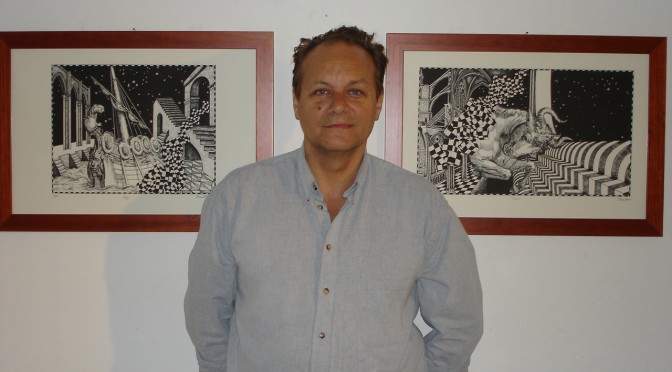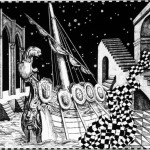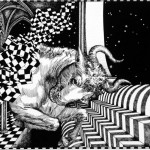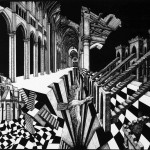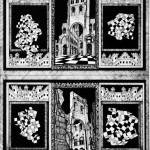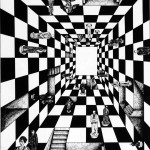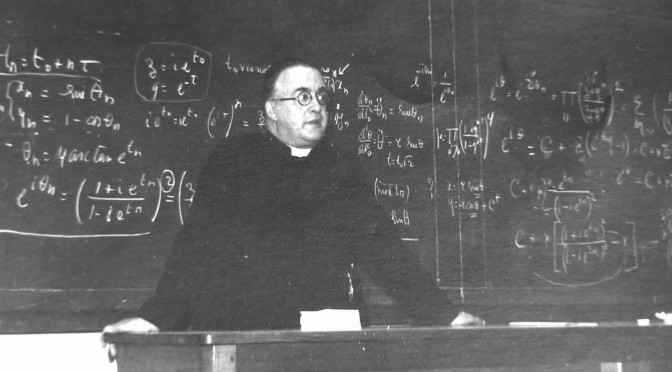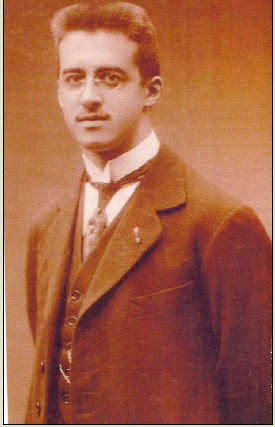Like the Italian artist and engraver Giovanni Battista Piranesi (1720-1778), whose follower he is, Jean-Pierre Luminet depicts space with passion and melancholy. By repeating ceaselessly black and white checkerboards, he evokes the notion of infinity and generates the dizziness of the glance. By disrupting the laws of classical perspective, he conjugates architectural immobility and time unsettledness. The artist immerses elements in a black ocean, and such a subtle interaction gives the sensation of perpetual time. Infinity is that aspiration felt by the man held on ground by gravitation. Jean-Pierre Luminet depicts this sensation by creating vanishing points towards which one feels irresistibly attracted.
Anne de Commines, Art criticsMonthly Archives: June 2015
The Rise of Big Bang Models (4) : Lemaître
Sequel of previous post : Dynamical solutions
In this series of posts about the history of relativistic cosmology, I provide an epistemological analysis of the developments of the field from 1917 to 2006, based on the seminal articles by Einstein, de Sitter, Friedmann, Lemaître, Hubble, Gamow and other main historical figures of the field. It appears that most of the ingredients of the present-day standard cosmological model, including the accelation of the expansion due to a repulsive dark energy, the interpretation of the cosmological constant as vacuum energy or the possible non-trivial topology of space, had been anticipated by Lemaître, although his papers remain mostly unquoted.
The discovery of expanding space
The 1920’s were precisely the time when the experimental data began to put in question the validity of static cosmological models. For instance, in 1924 the British theorist Arthur Eddington pointed out that, among the 41 spectral shifts of galaxies as measured by Vesto Slipher, 36 were redshifted ; he thus favored the de Sitter cosmological solution while, in 1925, his PhD student, the young Belgian priest Georges Lemaître, proved a linear relation distance-redshift in de Sitter’s solution. The same year 1925, Edwin Hubble proved the extragalactic nature of spiral nebulae. In other words, he confirmed that there existed other galaxies like our own, and the observable Universe was larger than previously expected. More important, the radiation from the faraway galaxies was systematically redshifted, which, interpreted as a Doppler effect, suggested that they were moving away from us at great speed. How was it possible ?
It was Lemaître who solved the puzzle. In his 1927 seminal paper Un univers homogène de masse constante et de rayon croissant, rendant compte de la vitesse radiale des nébuleuses extragalactiques, published in French in the Annales de la Société Scientifique de Bruxelles, Lemaître calculated the exact solutions of Einstein’s equations by assuming a positively curved space (with elliptic topology), time varying matter density and pressure, and a non-zero cosmological constant. He obtained a model with perpetual accelerated expansion, in which he adjusted the value of the cosmological constant such as the radius of the hyperspherical space R(t) constantly increased from the radius of the Einstein’s static hypersphere RE at t = – ∞. Therefore there was no past singularity and no « age problem ». The great novelty was that Lemaître provided the first interpretation of cosmological redshifts in terms of space expansion, instead of a real motion of galaxies : space was constantly expanding and consequently increased the apparent separations between galaxies. This idea proved to be one of the most significant discoveries of the century. Continue reading The Rise of Big Bang Models (4) : Lemaître
